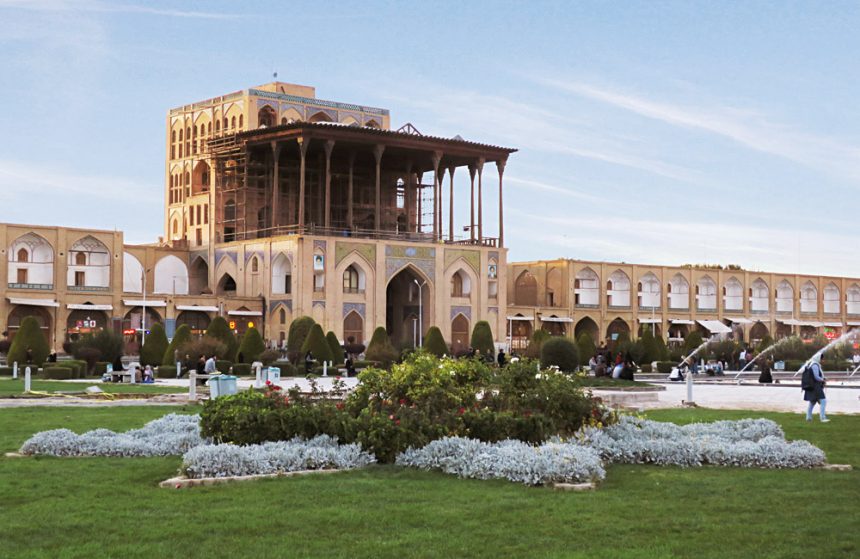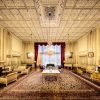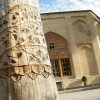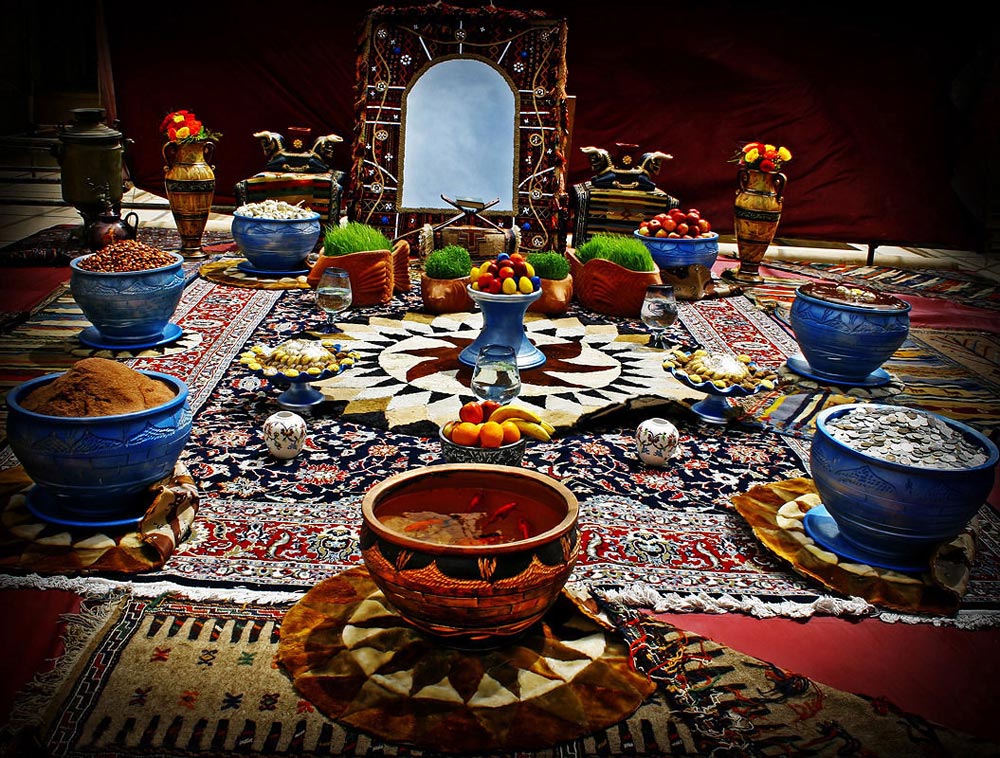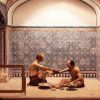Kakh-e Ali Qapu, also known as Ali Qapu Palace, is an illustrious royal abode from the late 16th century, built in the order of Shah Abbas I when the Persian capital was moved to Isfahan.
Ali, is a reference to Shah Abbas’s hero and idol Imam Ali and Qapu more simply, means gateway. Built to mark a grand identity, it takes conquers one side of Naghsh-e Jahan Square.
Its 38 meters of height, 18 wooden columns supporting its elegant front terrace and beautiful s 6-storey Persian design building make quite a stand. Come along with goingIRAN to learn and discover more about this majestic attraction!
Shah Abbas I’s Ali Qapu Palace
It is located on the western wing of the mighty square, across from the Sheikh Lotfollah Mosque. Shah Abbas had great taste. The great ruler used this illustrious palace to entertain his noble visitors and foreign ambassadors.
The beautiful terrace offers an awesome panoramic view, making it the perfect place to spectate chovgan (polo) games, ceremonies and the various events of the bustling Persian square.
The entire estate was adorned with wall paintings done by the world renowned Reza Abbasi, the court painter of Shah Abbas. Wonderfully intricate floral patterns and traditional Persian stills, once, covered every wall and ceiling of the amazing palace.
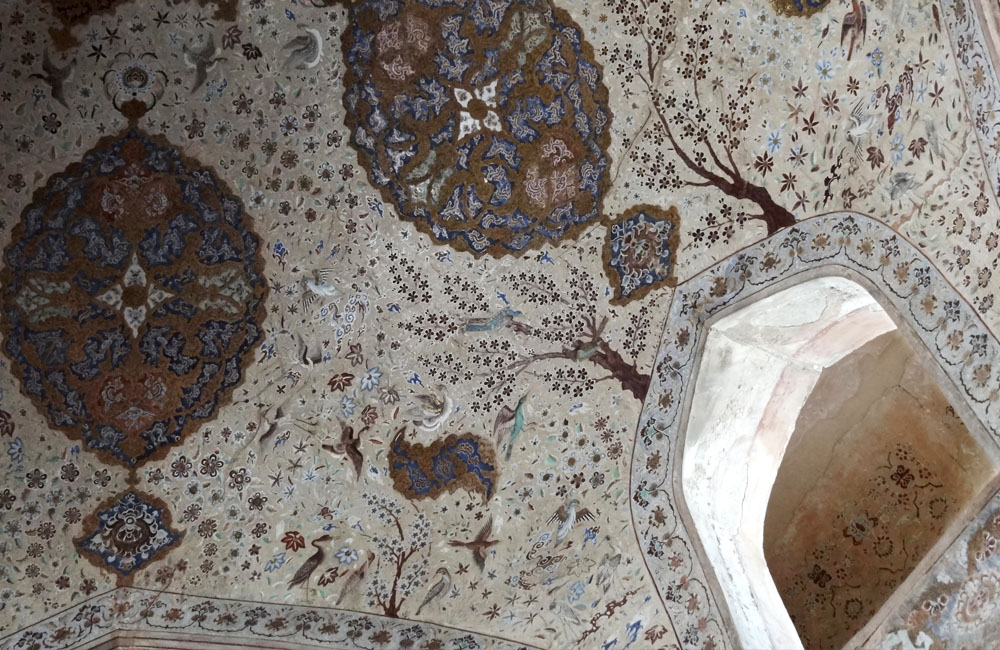
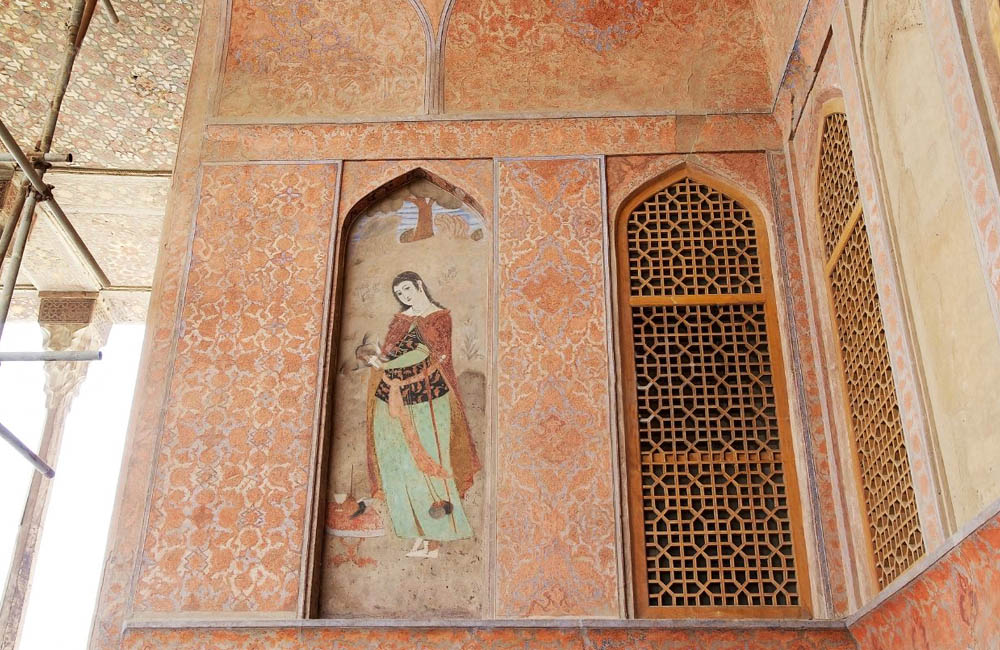
Sadly, only one out of all of the meticulously ornamented windows and doors has survived the ravages of the past social anarchy. It can be found on the third floor.
Also, in the late 18th century, many of the floral tile patterns of Shah Abbas were replaced by Naser al-Din Shah of the Qajar Dynasty, with inscription bearing tiles.
Architecture and Design of the Shah’s Palace
The dominating mansion is comprised of a total of six storeys, which lead to one another through extremely narrow and winding spiral staircases.
Dedicated to holy Imam Ali, the Ali Qapu palace was all about perfection. 18 single-piece columns of the terrace were entirely covered in mirrors, reflecting the magnificent wall paintings and surrounding atmosphere.
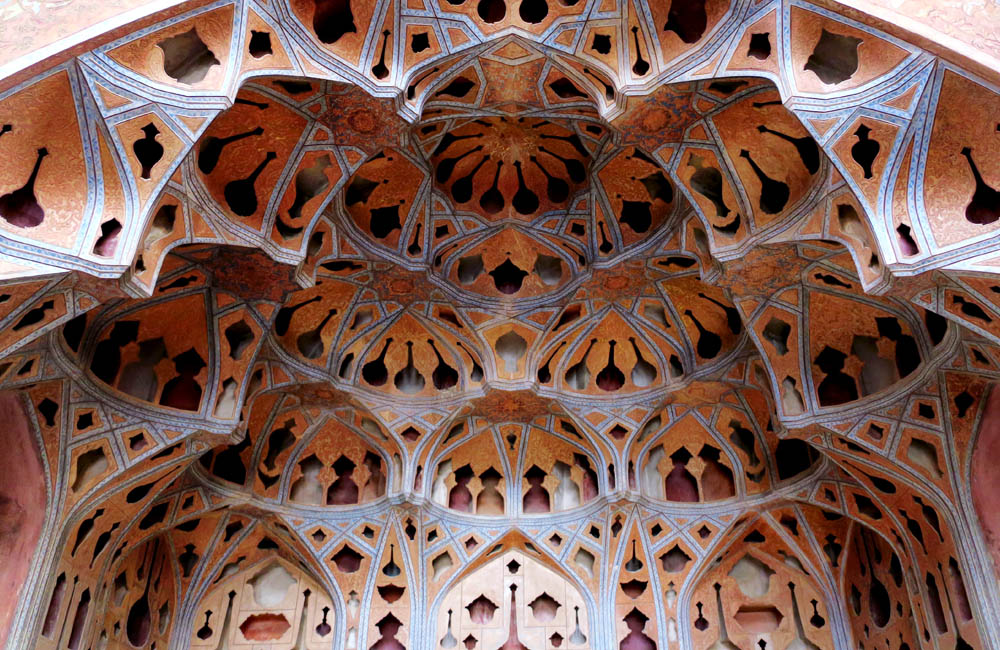
The beautiful mirrored columns created the effect of a ‘floating ceiling’; a sight, truly majestic! Such technique is only seen in the most lavish imperial works of Persian architecture.
Three floors higher, on the sixth, is the royal reception hall – also known as The Music Hall. The largest rooms of the estate were built on this floor exclusively to cater to the noble guests in royal receptions and banquets.
One of a kind examples of phenomenally intricate stucco designs and paintings are covering the walls and ceiling of this floor. Although many of the 52 rooms, corridors and other areas of the palace are currently under painstaking restoration, the Music Hall is in excellent condition!
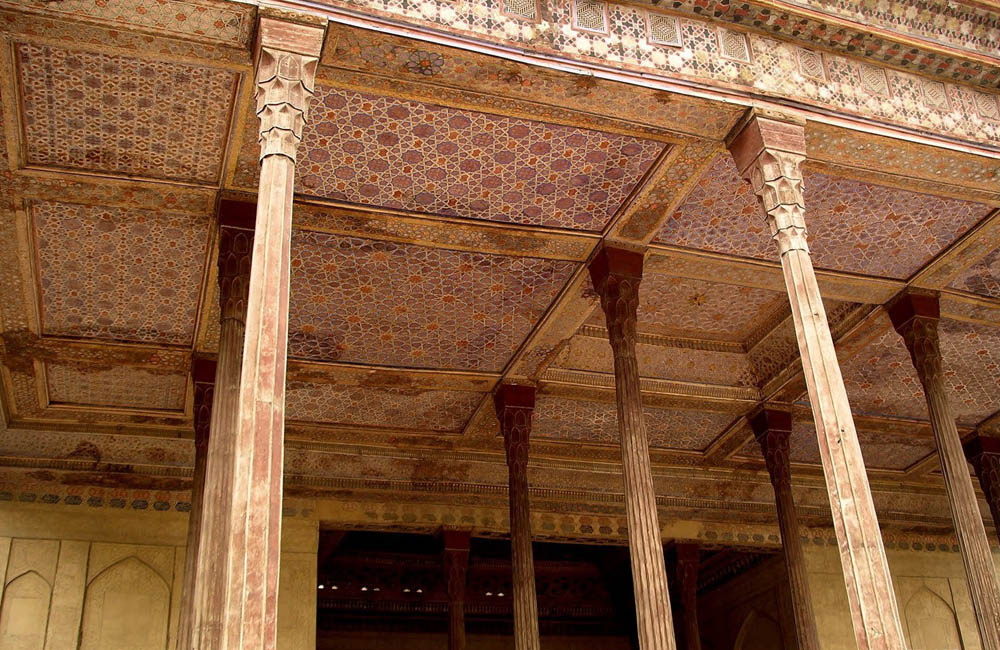
The various indentations and stencils seen throughout the ceiling, in the shape of rose-water shakers, are not only for esthetics. They also play a key role in enhancing acoustics; acting as modern-day amplifiers for the extraordinary musical concerts and performances held for Shah’s royal guests and family!
The high level of craftsmanship and delicate works of art by Reza Abbasi and architecture are known to be one of the finest examples of authentic Persian art.
Recommended Reads | Most beautiful places in Iran
City/Town: Isfahan
Address: Naghsh-e Jahan Square
Operating days: Every day
Operating Hours: 9am. to 6pm.
Typical Price: 200.000 Rls.
Neighborhood: Naghsh-e-Jahan Sq., Imam Mosque, Isfahan Bazaar, Mesgarha Bazaar, Sheikh Lotf-alah Mosque


